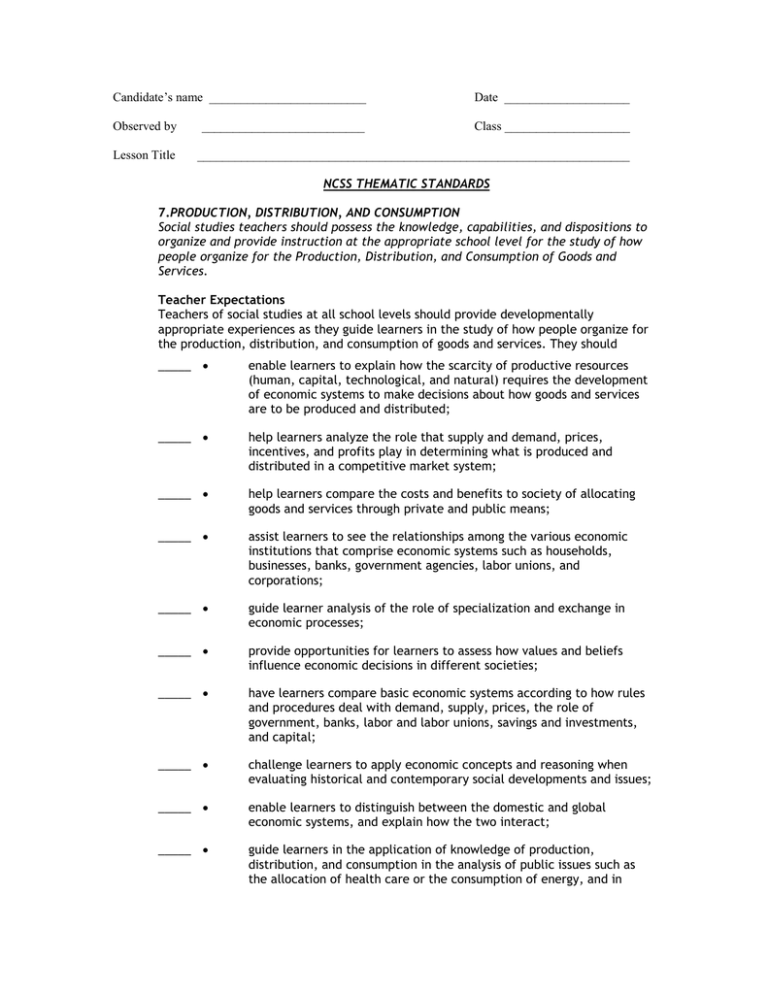Candidate’s name _________________________ Date ____________________
advertisement

Candidate’s name _________________________ Date ____________________ Observed by Class ____________________ Lesson Title __________________________ _____________________________________________________________________ NCSS THEMATIC STANDARDS 7.PRODUCTION, DISTRIBUTION, AND CONSUMPTION Social studies teachers should possess the knowledge, capabilities, and dispositions to organize and provide instruction at the appropriate school level for the study of how people organize for the Production, Distribution, and Consumption of Goods and Services. Teacher Expectations Teachers of social studies at all school levels should provide developmentally appropriate experiences as they guide learners in the study of how people organize for the production, distribution, and consumption of goods and services. They should _____ enable learners to explain how the scarcity of productive resources (human, capital, technological, and natural) requires the development of economic systems to make decisions about how goods and services are to be produced and distributed; _____ help learners analyze the role that supply and demand, prices, incentives, and profits play in determining what is produced and distributed in a competitive market system; _____ help learners compare the costs and benefits to society of allocating goods and services through private and public means; _____ assist learners to see the relationships among the various economic institutions that comprise economic systems such as households, businesses, banks, government agencies, labor unions, and corporations; _____ guide learner analysis of the role of specialization and exchange in economic processes; _____ provide opportunities for learners to assess how values and beliefs influence economic decisions in different societies; _____ have learners compare basic economic systems according to how rules and procedures deal with demand, supply, prices, the role of government, banks, labor and labor unions, savings and investments, and capital; _____ challenge learners to apply economic concepts and reasoning when evaluating historical and contemporary social developments and issues; _____ enable learners to distinguish between the domestic and global economic systems, and explain how the two interact; _____ guide learners in the application of knowledge of production, distribution, and consumption in the analysis of public issues such as the allocation of health care or the consumption of energy, and in devising economic plans for accomplishing socially desirable outcomes related to such issues; _____ help learners to distinguish between economics as a field of inquiry and the economy. COMMENTS







